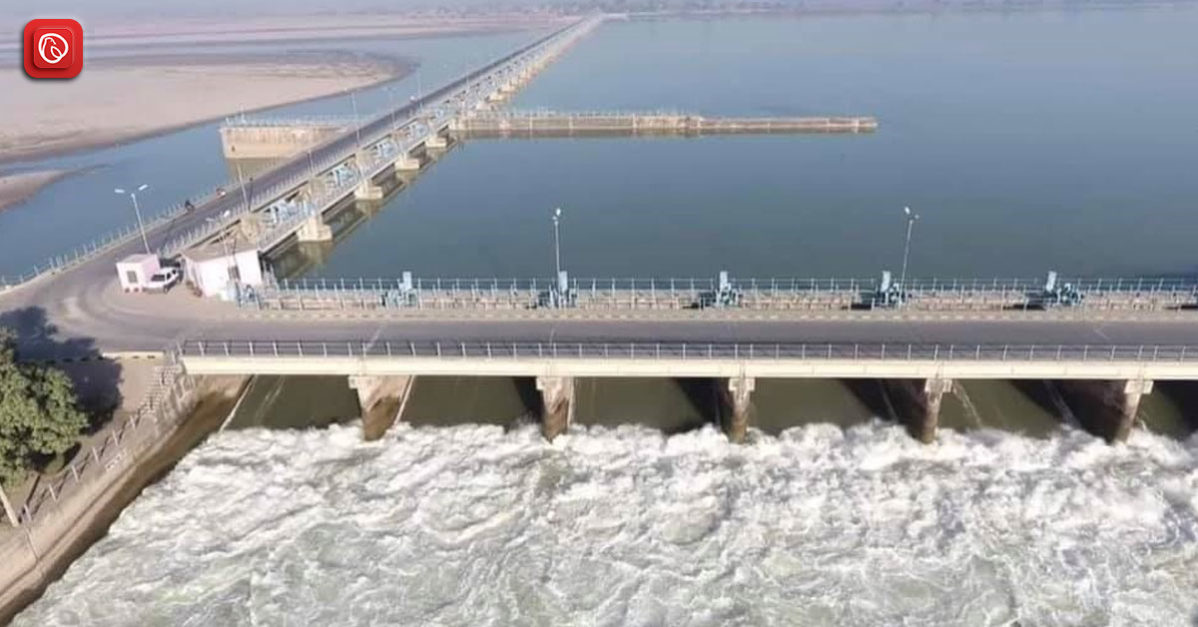
Qadirabad, a historically significant village in Pakistan’s Punjab province, is located right next to the Chenab River. It is situated in the Phalia tehsil of the Mandi Bahauddin District. The land promises a trip of culture, scenic beauty, and the friendliness of its people. It provides a window into rural Punjab.
For more details about the village of Qadirabad, visit Graana.com.
| Feature | Value |
| Coordinates | 32°17′51″N 73°30′07″E |
| Country | Pakistan |
| Region | Punjab |
| District | Mandi Bahauddin |
| Tehsil | Phalia |
In Pakistan’s Punjab District’s Mandi Bahauddin District, Qadirabad reveals its allure. The settlement is situated near the Phalia town administration centre because it is part of the Phalia tehsil.
More significantly, Qadirabad is beautifully situated close to Pakistan’s main river, the Chenab River. The village’s growth was probably influenced by its closeness to the river, which may also have impacted its farming methods.
Information indicates that there may be a connection to the motorway network for the surrounding roads. Some sites also highlight having access to Motorway M-3, which might provide links to the area’s bigger cities.
Furthermore, Qadirabad may be connected to neighbouring towns and villages in the Phalia tehsil by local roads.
Below is a summary of the options you can choose from to reach Qadirabad:
Because Qadirabad is small, there are only a few significant attractions nearby.
From Qadirabad, several towns and cities are conveniently located. The nearest city is Phalia, which is around twenty kilometres distant. The district capital, Mandi Bahauddin, is around forty kilometres away. Gujrat is about 70 kilometres away for a more expansive city experience.
Here are some distances to help you with your itinerary:
In Pakistan’s Punjab region, the Qadirabad Barrage is a notable engineering marvel on the Chenab River. More than just a building, it is the cornerstone of the area’s agricultural success story.
Built as a component of the Indus Basin Project, the Qadirabad Barrage has a distinguished past. Constructed in the mid-1900s, it bears witness to the vision and technical mastery of the time.
Encompassing more than 3,300 feet and featuring 50 distinct bays, the barrage controls the course of the Chenab River, guaranteeing an essential water source for the adjacent regions.
An important part of water management is the Qadirabad Barrage. By managing the flow of the Chenab River, it diverts water into agricultural canals while simultaneously preventing flooding during intense monsoon seasons.
This diverted water nourishes large stretches of farmland, which is vital to the agricultural industry. With a planned capacity of 9 million cusecs, the barrage has enormous potential for irrigating large areas of land.
The Qadirabad Barrage’s importance goes beyond its use in farming. It is an essential head regulator for the Rasul-Qadirabad-Baloki-Sulemanki Link Canal System. It is a vital water distribution network spanning a larger area. Furthermore, the barrage may aid in the production of hydropower. However, further data is required to make this claim with certainty.
The Qadirabad Barrage, towering over the Chenab River, is a symbol of Pakistan’s success and development. It represents how human ingenuity has tamed the forces of nature to support prosperity and life. The barrage’s continuous operation guarantees the well-being of innumerable communities that rely on its life-giving waters.
The history of Qadirabad emerges like a tale passed down through the ages. The very name of the settlement, “Qadirabad,” conjures up images of Mirza Qadir Khan, whose grave is inside the village walls together with his brother’s.
Travelling back in time, we reach the mid-1600s, when Qadirabad was surrounded by a wall for protection. With its three entrances, this wall represented the community’s resilience and cohesiveness in addition to acting as a physical barrier.
In the twentieth century, Qadirabad is situated in the nexus of a nation’s formation. The village’s predominately Muslim residents enthusiastically backed the Pakistan Movement and the Muslim League. The course of history changed in 1947 when Pakistan gained its independence.
In search of a fresh start, the minority Hindu and Sikh groups immigrated to India. But there was a flip side to this migration.
Like many Pakistani villages, Qadirabad’s history bears witness to its people’s resilience. It’s a tale of resiliency, transformation, and the lasting strength of community.
Here are the FAQs.
Qadirabad is a village in the Phalia tehsil of Mandi Bahauddin District, Punjab province, Pakistan. Its geographical coordinates are 32°17′51″N 73°30′07″E.
The village’s name comes from Mirza Qadir Khan, a historical figure believed to be buried alongside his brother in the town.
While Qadirabad lacks its own airport or train station, several options exist for reaching the village. The nearest railway station is in Mandi Bahauddin town, and several international airports are within driving distance (Lahore, Faisalabad, Sialkot, Islamabad). Upon arrival at any of these airports, you can reach Qadirabad by car or taxi.
Due to its size, Qadirabad itself might have little attractions. However, the surrounding Mandi Bahauddin District offers historical sites like the Mausoleum of Bahauddin Zakariya and the Multan Museum in Multan City.
The Qadirabad Barrage is a crucial structure on the Chenab River. It regulates water flow, preventing floods and diverting water for irrigation purposes. This ensures a vital water supply for the surrounding agricultural lands and contributes to the region’s prosperity.
This was all about Qadirabad. For more information, visit Graana.com.
LONDON: British Pakistani entrepreneur Shafiq Akbar was honoured at the UK Parliament in recognition of…
Peshawar: In a landmark move, the Khyber Pakhtunkhwa (KP) government is set to launch its…
Islamabad, July 2025 — In a continued effort to enrich the experiences of its community,…
Lahore: The Lahore Development Authority (LDA) has achieved a record-breaking 44% increase in revenue during…
The Age of Real Estate Guesswork Pakistan's real estate market has relied on word-of-mouth, whispers,…
In an era where technology is redefining industries, real estate is no exception. PropTech—short for…